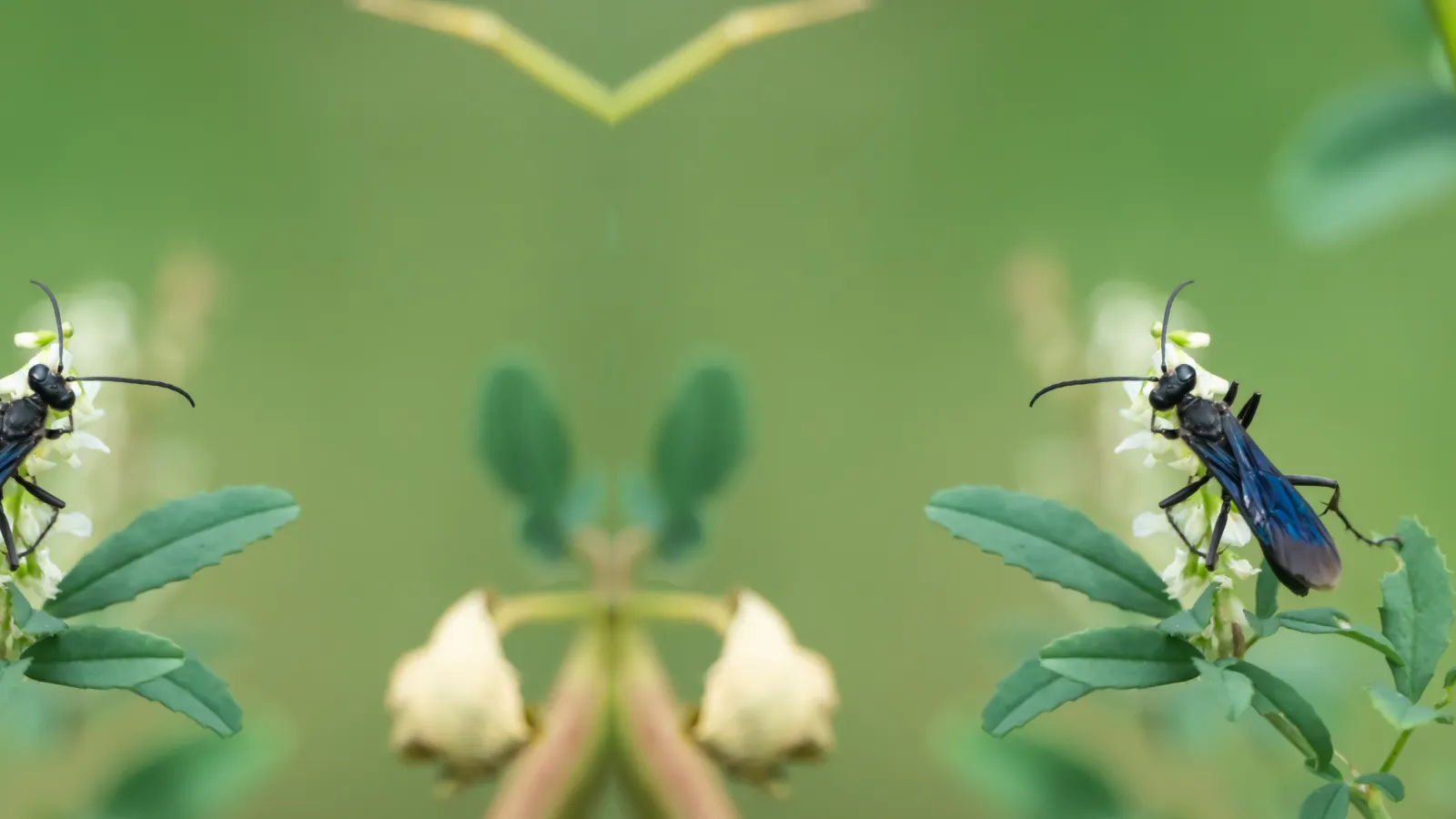
Great Black Wasps
Latin Name: Sphex pensylvanicus
Mainly visible in flowering areas during the summer, the Great Black Wasp is a fascinating creature with peculiar behavior. It belongs to a category of wasps called 'digger wasps', named for their penchant for digging in the ground and characterized by their beak-like mandibles, solitary nature, and the shape of their bodies. They're found throughout the continental US, Canada, and Mexico but tend to stay away from the Pacific Northwest. They are identified easily by the deep blue sheen of their wings, are typically between 1 and 1 ½ inches, and the females are larger than males. They are known as a helpful pollinators in the garden.
By and large, these creatures are considered harmless to humans. A great black wasp sting is not necessarily dangerous but could be unpleasant and cause allergic reactions in some individuals. The great black wasp does not sting maliciously, only in retaliation after being provoked. If you can, keep your distance from them to avoid a sting.
You wouldn't want to be one of the wasp's bugs of prey, as it can be a nightmare for other bugs in the backyard kingdom. When a mother wasp is ready to breed her young, she'll go and find an unsuspecting bug, paralyze it with her saliva, and drag it back down to a tunnel she's dug underground. There, she'll lay a few eggs on the motionless prey. Once her eggs hatch, the buried-alive kill will serve as the baby black wasps' fresh buffet until they mature.
To keep your area safe and enjoyable, contact Palmetto Exterminators for pest control management.
Similar Pests: Wasps, Yellow Jackets, Carpenter Bees